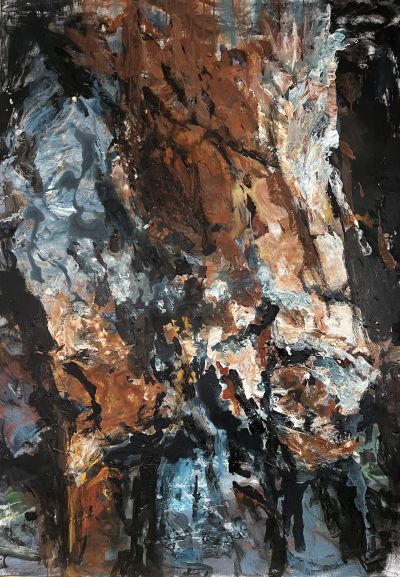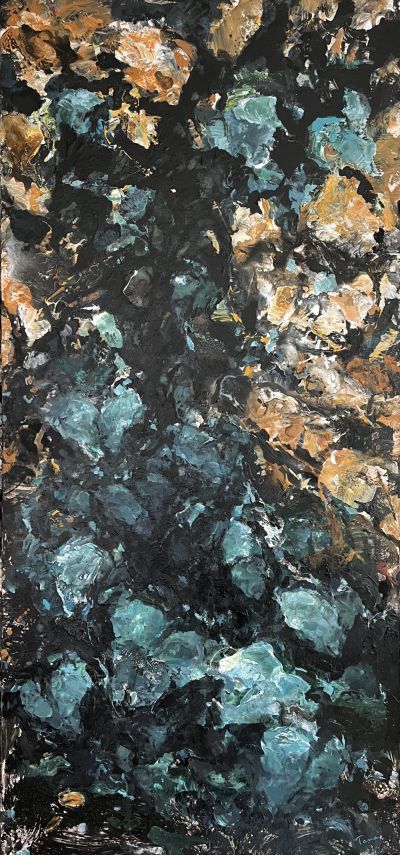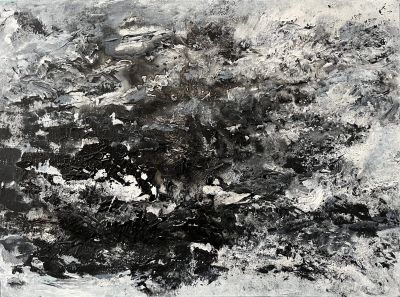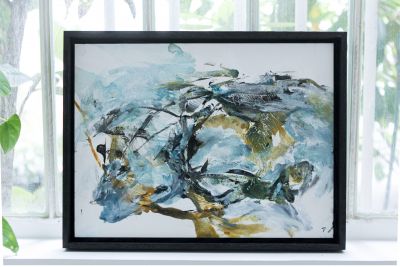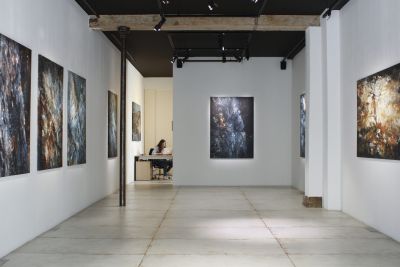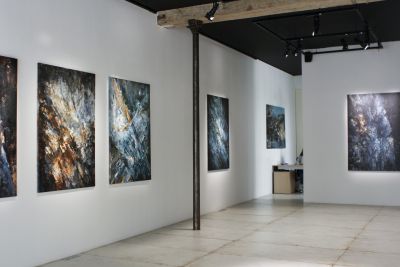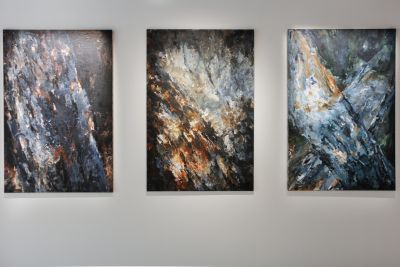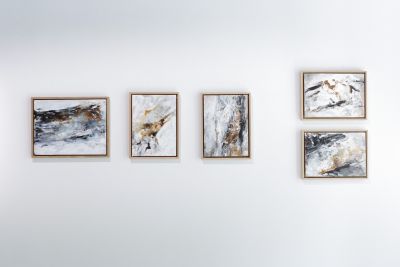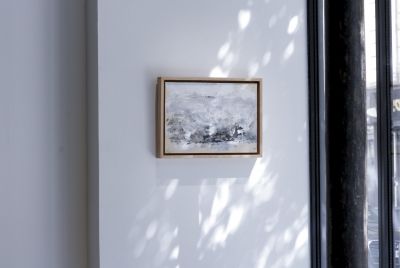It's a mystery that unrolls its question marks in the ordinary train of our existences, and which is celebrated in Tana Borissova's studio. It's a tense mystery, exasperating for the mind; an exhilarating mystery, a source of inexhaustible and lively joy for the other faculties - spiritual and sensory alike.
In a word: how does matter and its inert properties (extent, hardness or plastic docility, consistency or tenuity) give rise to life? Or, better put: how does matter, which is subject to the necessities of physical laws, awaken to life - does it think - feel - escape the fallout of gravity? These passengers on my subway line, these colors on Tana Borissova's canvases: why don't they all boil down to the mere assembly of molecules, tendons and pigments that make them up? The answer, if there is one, doesn't lie with us. But there's nothing to stop us, like and with Tana Borissova, getting to the heart of the mystery.
Here is a tree: a section of bark and wood; here are colors (blues more or less saturated with light, ochres more or less approaching the point of incandescence and fusion); here are the paintings in the exhibition. And “here” is not enough; there's always more to see than “here”.
The heart of things: where the superficial uniformity of tissue, dermis and bark is broken, where there is a complication of forms, a shimmer of nuances, indefinitely gazable, caressable, questionable. Where organic matter takes on the variety of the living. In Tana Borissova's work, for example, the infinite cartography of inner landscapes, which, like the worlds sheltered by drops of river water, draw the topography (the geology, the geography, we don't really know how to put it) of the plant being that the paintings delve into and repress.
The heart of things: where art seeks out the raw components whose assembly gives rise to life. These very components are revealed by Tana Borissova's chromatic variations, indefinitely flexible but always connected to the fourfold core of all things, always suggestive of the tones of the four elements: earth, water, fire and sky hues.
Tana Borissova is in the tradition of the great “decomposers” - of those who, with light, earth and rock, can see only in terms of multiplicity - whether Turner, of course, or Giuseppe De Nittis at Vesuvius, or Courbet at the Caverne des Géants, or Dora Maar's landscapes.
I'll never be another traveler in the metro, but I can know him; I'll never be another painting by Tana Borissova, but its currents, its flows, carry me away; I'm caught up in the momentum of this surge, in the impetuosity of life. Thrusts, jets: this is the dynamic impression made by Tana Borissova's canvases. Vital breath, heartbeat, the flow of blood in the arteries, sap in plants, the flow of time...
It's all about movement and emotion. For Tana Borissova's tree, like her painting, feels, senses. It's a magnificent mystery, and all that's left to do is to be silent. And to look.
- Damien Aubel, journalist and art critic



